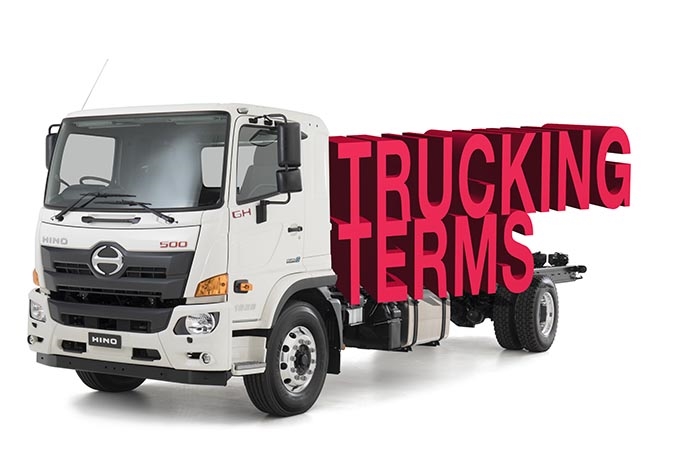
Whether you’re just getting into the trucking game or maybe need to brush up on some of the lingo, don’t worry as we’ve put together a brief truck 101 glossary of important terms to know.
So, here’s 5 trucking terms to know before taking that essential first step towards your first truck purchase.
Horsepower (HP)
This 18th century term originated from an observation of draft horses by a gentleman by the name of Watt. Mr Watt determined the average work of a horse per minute was 33000 foot pounds per minute. This figure was then said to be 1 horsepower (HP). Simply put, it’s the muscle behind the machine, horsepower is the measure of the amount of work that can be done by an engine in a certain amount of time and is dependent on the torque and speed of the engine.
Modern engines are often measured in metric terms like kilowatts (kW) or Pferdestärke (PS). Pferdestärke is a German term known in the industry as “metric horsepower”.
1 HP is the work required to lift 550 foot-pounds per second, 1HP = 0.746 KW = 1.014 PS.
Fifth Wheel
Another past term word that comes from the coupling used on four-wheel horse-drawn carriages and wagons, the fifth wheel is the load supporting plate mounted to rear frame of the towing vehicle. This pivot-mounted coupling is located ahead of the centreline of the towing vehicle’s rear axle and creates a flexible link between the truck and trailer. In Japan, this is called a tractor trailer but most commonly in Australia, this configuration is called a “semi-trailer”.
A fifth wheel or semi-trailer configuration will share the load of the trailer onto the towing vehicle and will in most cases be a more stable trailer configuration.
Gross Vehicle Mass (GVM)
Gross Vehicle Mass (GVM) is the maximum total weight that a truck can apply to the ground (also refer to as the GVW Gross Vehicle Weight). The GVM includes the weight of cab chassis (Tare weight), body, equipment, accessories, fuel, driver, passengers and cargo. The GVM does not include the weight of a trailer unless some of the trailer weight is applied to the truck (i.e. weight on the towing attachment).
Keep in mind, there is a difference between a manufacturers maximum GVM and the road legal GVM. Registering authorities limit the maximum weight a truck can apply to the road to prevent damage to roads and bridges. For example: A Hino GH1835 has a manufacturer max GVM of 18t however, the current max allowance for NSW is 15.5t as a common 2 axle rigid truck.
Below are the range of manufacturer GVM ratings for our Hino truck range
Differential
First and for most a differential is a device to change the direction of drive. A differential also allows a vehicle to turn corners, the inner and outer drive wheels actually turn at different speeds. Without a differential, a vehicle actually cannot turn corners. A standard differential is a three-shaft gear train located on the drive axle that allows the outer drive wheel to rotate faster than the inner drive wheel during a turn.
A differential will also have a gear ratio. This ratio will act as a torque multiplier to increase the applied power to the ground through the wheels. Having the correct gear ratio in your truck is very important to create a balance between power and fuel economy.
Note: The Hino Vehicle Stability Control feature provides a traction aid to help send torque to the wheels with the most traction.
Vehicle Stability Control (VSC)
VSC or Vehicle Stability Control, is an electronic safety feature which helps the driver maintain control of the vehicle. This system is primary designed to prevent vehicle rollover, spin, understeering and stabilise the vehicle while turning on a curve. The system will assess the condition of the vehicle while driving. If the system determines the vehicle may be out of the drivers control, it will apply the brakes and or de-rate the engine power to bring the vehicle into the control of the driver. We first equipped our Hino 300 Series range with VSC in 2011, but now offer this safety feature as standard with our new Hino 500 Series Wide Cab.
Ready to contact a dealer? Find your nearest Hino dealer here.